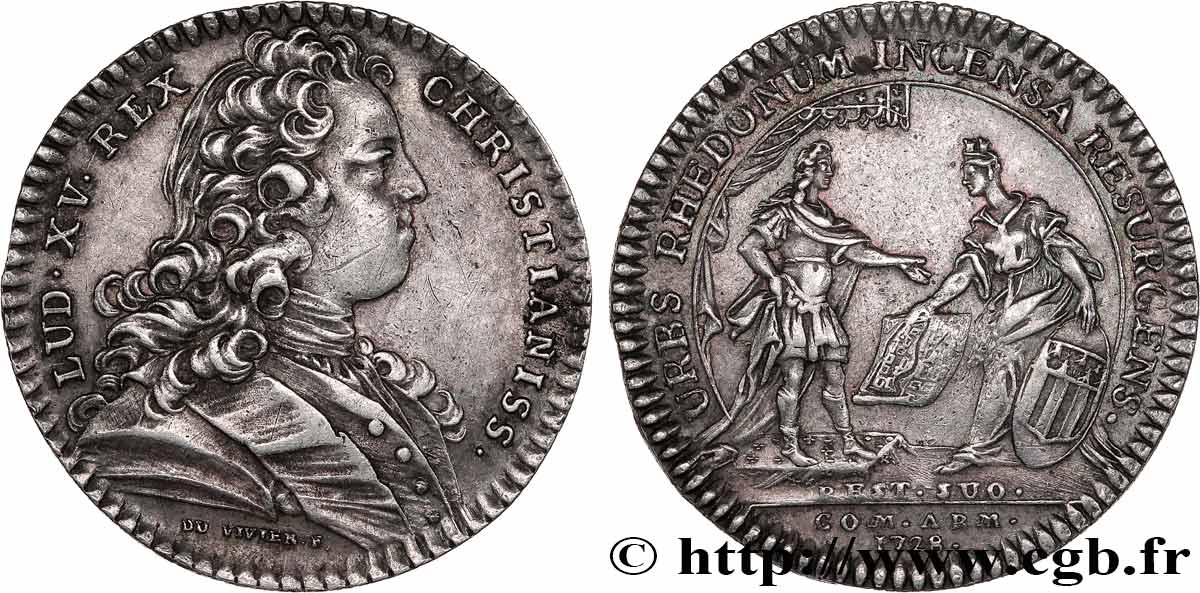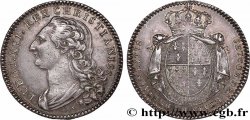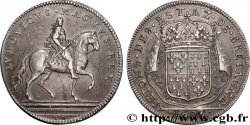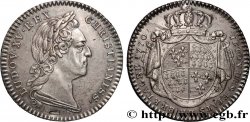fjt_770659 - BRITTANY (STATES OF...) Jeton AR 29, États de Rennes 1728
120.00 €(Approx. 141.60$ | 104.40£)
Quantity
Add to your cart

Type : Jeton AR 29, États de Rennes
Date: 1728
Metal : silver
Diameter : 29 mm
Orientation dies : 6 h.
Weight : 6,22 g.
Edge : cannelée
Catalogue references :
Obverse
Obverse legend : LUD. XV. REX - CHRISTIANISS..
Obverse description : Buste à droite en habit à quatre boutons, avec cravate et grand cordon, au-dessous signature DU VIVIER. F..
Reverse
Reverse legend : URBS. RHEDONUM. INCENSA. RESURGENS.
Reverse description : La ville de Rennes tourelée debout à gauche présente au Roi le nouveau plan de la ville; elle s'appuie sur les armes de celle-ci; sous leurs pieds REST. SUO.
Reverse translation : Détruite par un incendie, la ville de Rennes ressuscite.
Commentary
Le revers fait référence à la reconstruction de la ville suite à l’incendie du 23 septembre 1720 qui ravage durant six jours environ 900 maisons du centre-ville. Sous les ordres du maire Rallier du Baty, la reconstruction est confiée à l’ingénieur Isaac Robelin et sera réalisée par Jacques Gabriel, premier architecte du roi. Le centre aux ruelles tortueuses laissera alors la place à des voies à l’équerre, la pierre remplace comme matériau de construction le bois qui est interdit.
The reverse refers to the reconstruction of the city following the fire of September 23, 1720, which ravaged approximately 900 houses in the city center for six days. Under the orders of Mayor Rallier du Baty, the reconstruction was entrusted to the engineer Isaac Robelin and was carried out by Jacques Gabriel, the king's first architect. The center with its winding streets then gave way to square roads, and stone replaced wood, which was banned, as a building material.
The reverse refers to the reconstruction of the city following the fire of September 23, 1720, which ravaged approximately 900 houses in the city center for six days. Under the orders of Mayor Rallier du Baty, the reconstruction was entrusted to the engineer Isaac Robelin and was carried out by Jacques Gabriel, the king's first architect. The center with its winding streets then gave way to square roads, and stone replaced wood, which was banned, as a building material.








 Report a mistake
Report a mistake Print the page
Print the page Share my selection
Share my selection Ask a question
Ask a question Consign / sell
Consign / sell
 Full data
Full data










